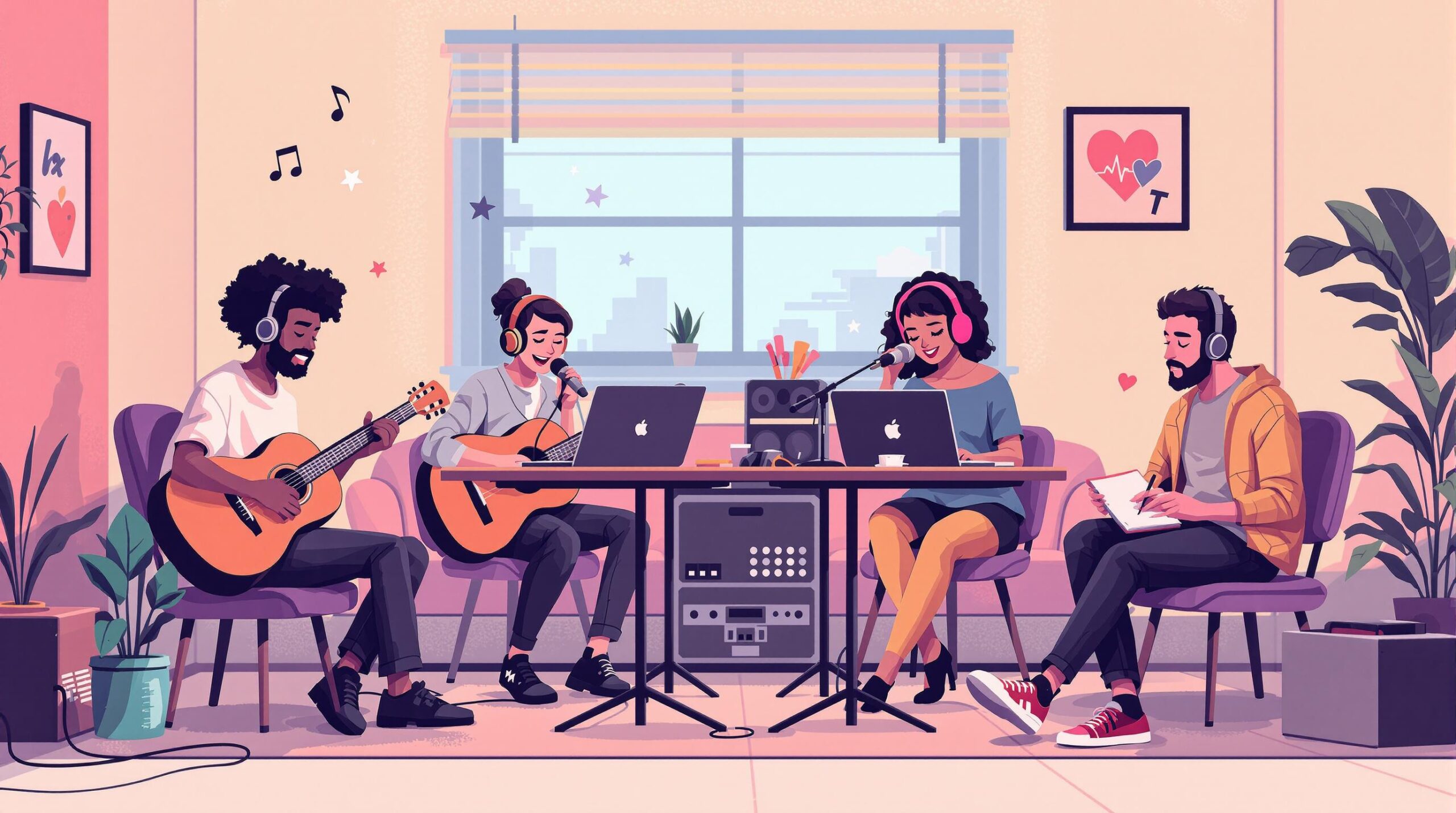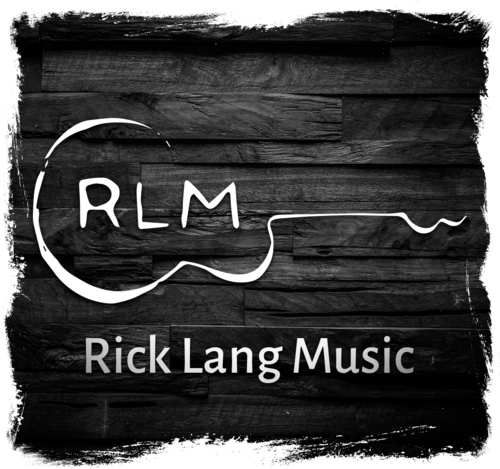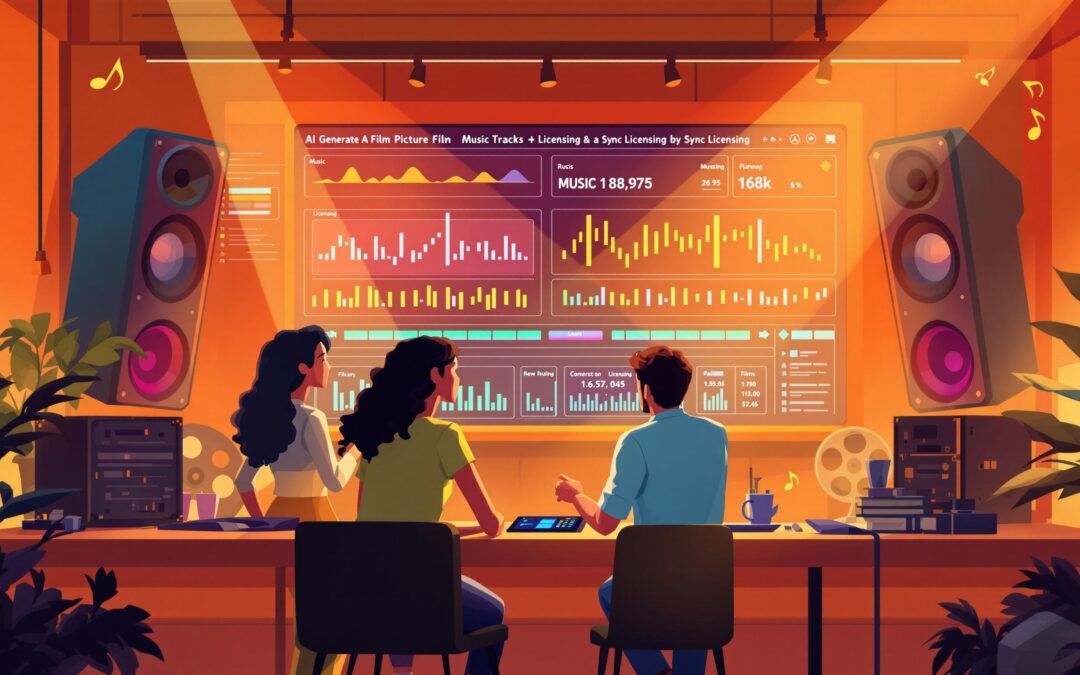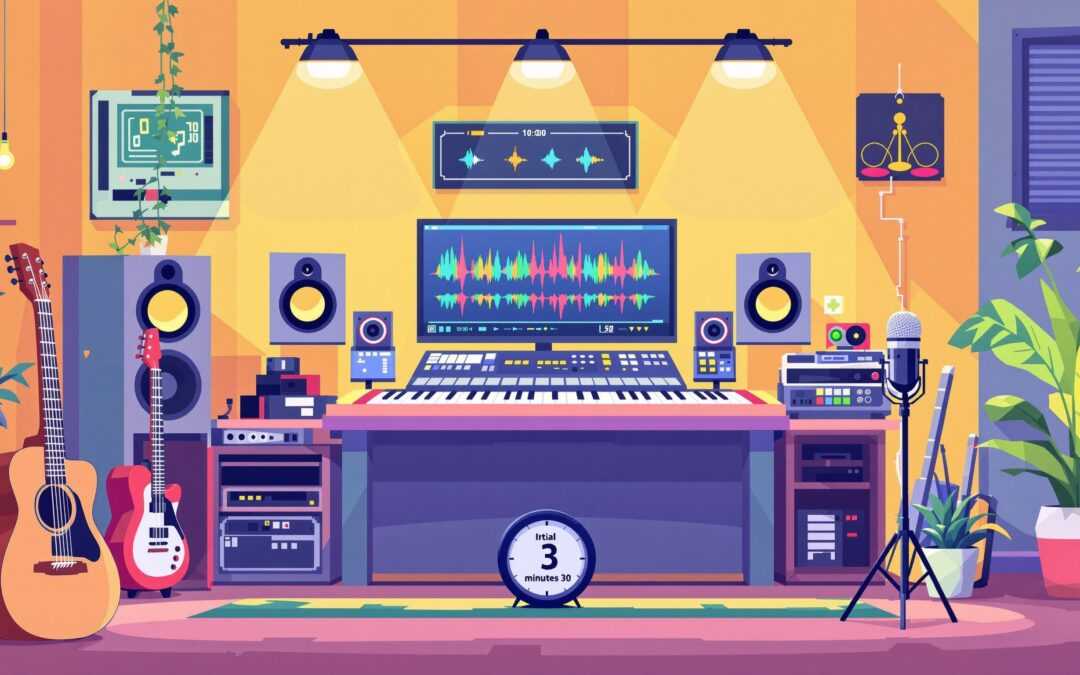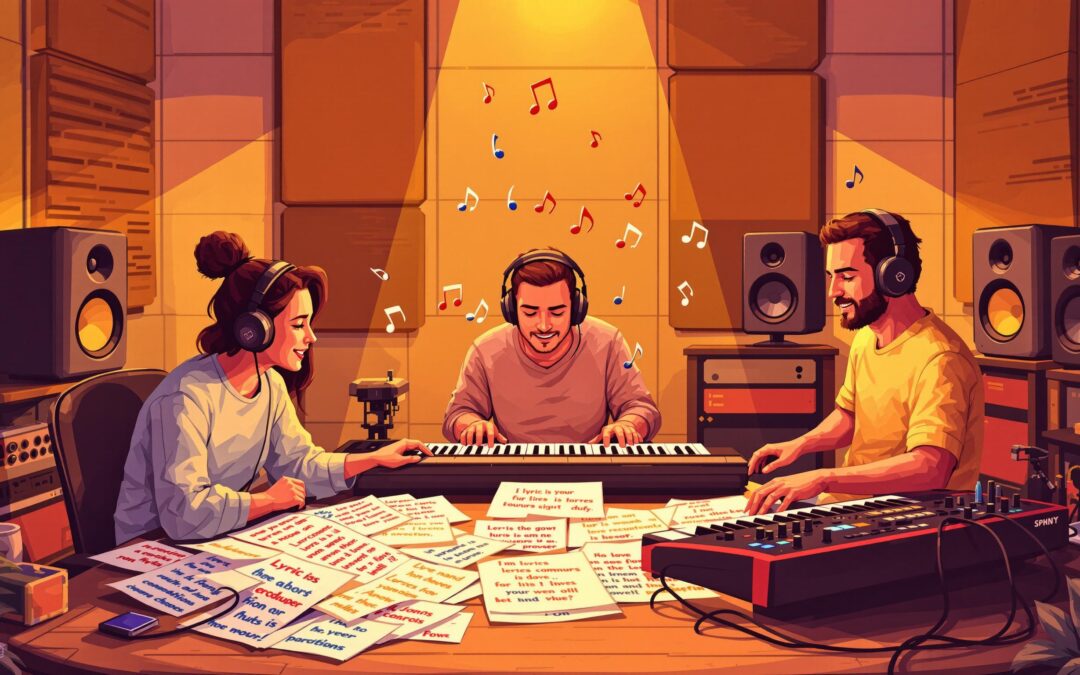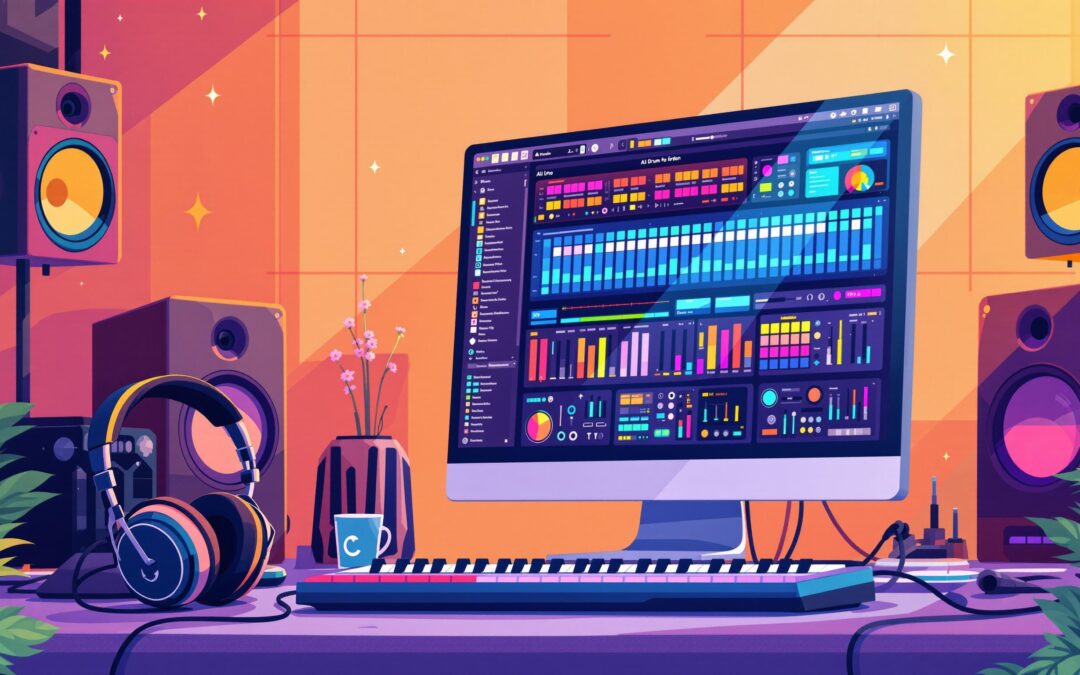Online song collaboration lets you work with musicians worldwide, but it requires clear communication, organized tools, and well-defined roles. Here’s how to make it work:
- Use the Right Tools: Platforms like Discord, Zoom, and Slack help with communication. Tools like Soundtrap and Splice streamline music production.
- Set Clear Goals: Define song structure, genre, deadlines, and roles upfront. Use shared documents to track progress.
- Manage Time Zones: Plan meetings with tools like World Time Buddy. Alternate meeting times to accommodate everyone.
- Organize Files: Name files consistently (e.g., SongTitle_YYYYMMDD_V##) and store them on platforms like Google Drive or Dropbox.
- Protect Rights: Track contributions, agree on splits early, and formalize with digital contracts like DocuSign.
Quick Tip: Maintain high sound quality by recording in WAV format, sharing drafts as MP3s, and testing audio across devices.
Remote music collaboration made easy
Setting Up Clear Communication Systems
Clear and dependable communication tools are essential to avoid misunderstandings and keep creativity flowing.
Choosing the Right Communication Tools
Pick platforms that offer high-quality audio and features tailored for music collaboration.
| Platform | Key Features | Best For |
|---|---|---|
| Discord | – Custom music bots – High-quality voice channels – Separate text channels |
Day-to-day communication for projects |
| Zoom | – HD audio – Screen sharing – Recording options |
Live writing and brainstorming sessions |
| Slack | – File organization – Threaded discussions – Integration with music tools |
Coordinating and managing projects |
Once you’ve selected your tools, focus on defining clear collaborative goals.
Aligning on Project Goals
Before diving into the creative process, share reference tracks and agree on the overall direction. Tools like Write.Record.Release can help track progress effectively.
Create a shared document to outline:
- The target genre and key influences
- Song structure and length
- Central theme or message
- Deadlines for each phase
- Roles and responsibilities for each team member
Handling Time Zone Challenges
Incorporate time zone planning into your workflow to ensure smooth collaboration. Use tools like World Time Buddy to pinpoint the best times for meetings.
For Asynchronous Work:
- Record and share drafts or ideas.
- Provide feedback on shared tracks.
- Update project files regularly.
For Synchronous Sessions:
- Kick-off meetings to plan the project.
- Discussions for making critical decisions.
- Finalizing arrangements and details.
Rotate meeting times to share the inconvenience fairly among team members. Always document session outcomes thoroughly so everyone stays on the same page, even when working offline.
Managing Technical Tools and Files
Choosing Compatible Software
Pick a DAW or collaboration tool that fits your songwriting needs and supports remote teamwork.
| DAW/Platform | Key Features for Collaboration | Ideal For |
|---|---|---|
| Soundtrap | • Real-time collaboration • Browser-based access |
Beginners or quick sessions |
| Splice | • Version control • Sample sharing • Project backup |
Professional projects |
Make sure everyone involved is comfortable using the chosen platform. For detailed setup tips, check out Write.Record.Release guides to streamline your creative process.
Organizing Files and Versions
Use a consistent file naming system to avoid confusion:
Format: SongTitle_YYYYMMDD_V##[Collaborator Initials][Section]
Example: Summertime_20250306_V02_JD_Vocals
- Main project files: Store DAW files and stems on Google Drive.
- Drafts and ideas: Save rough recordings and voice memos on Dropbox.
- Final versions: Back up final mixes using multiple services.
Keeping everything organized ensures smooth collaboration and easy access for everyone.
Keeping Sound Quality High
Follow these steps to maintain top-notch audio quality:
- File Formats: Record in WAV (24-bit/48kHz) for the best quality. Share drafts as 320kbps MP3 files, and use uncompressed formats for final mixes.
- File Transfers: Use WeTransfer Pro for large sessions, Dropbox for smaller updates, and Google Drive to archive old versions.
- Quality Checks: Always compare exports to the original, test audio on different devices, and log any issues during file conversions.
These practices will help you deliver polished, professional results every time.
sbb-itb-1c6af30
Making Remote Sessions Work
Live Collaboration Tools
Live collaboration tools bring the energy of in-person sessions to remote settings by enabling real-time interaction. These platforms make it easier to communicate during vocal tracking, instrumental recording, or making production tweaks. They also help create a shared workspace where ideas can flow and be organized effectively.
Creating Shared Idea Boards
Shared idea boards act as a hub for organizing and refining creative concepts. With these boards, you can keep everything – audio clips, lyric drafts, and reference tracks – in one place. To stay organized, set up separate boards for song ideas, lyrics, and production notes. Write.Record.Release suggests using private board features to gather visual inspiration that aligns with your song’s emotional tone. This approach makes planning sessions much smoother.
Setting Regular Writing Times
A consistent remote writing schedule helps manage time zones and keeps everyone on track. Break each session into clear phases, like brainstorming, composing, reviewing, and handling technical details. Use scheduling tools to find meeting times that work best for the whole team.
Handling Rights and Ownership
Tracking Contributions
When collaborating remotely on songwriting, it’s essential to document everyone’s input. Use split sheets to record contributions like melody, lyrics, chord progressions, or production. Keep a log of session dates, specific contributions, and version histories. This helps avoid misunderstandings and ensures everyone gets their fair share.
Agreeing on Song Splits
Once contributions are tracked, discuss ownership percentages early in the process. Agreeing on shares before starting the work can prevent future conflicts. Use split sheets to document these agreements clearly, with straightforward percentages that everyone involved understands and accepts.
Leveraging Digital Contracts
Digital tools like DocuSign and Adobe Sign make it easy to formalize songwriting agreements. These platforms offer features like electronic signatures, secure storage, and audit trails. Such contracts ensure that agreements are legally binding and transparent for all collaborators.
Conclusion: Keys to Successful Online Collaboration
Main Points to Remember
Collaborating online successfully requires a mix of clear communication, reliable tools, and proper legal documentation. As mentioned earlier, having well-organized workflows and clearly outlined rights is essential for remote songwriting to work smoothly. Make sure agreements and documentation are set up early to avoid issues down the line.
Consistency and structure are at the heart of effective remote songwriting partnerships. Set up regular sessions that respect time zone differences, use shared idea boards to keep everyone on the same page, and define clear project milestones. These practices help ensure a productive co-writing process and pave the way for ongoing growth.
Where to Learn More
If you’re looking to deepen your understanding, there are great resources available. Write.Record.Release offers practical advice on co-writing, copyright management, and music distribution through platforms like CDBaby.
Their platform includes sections on collaboration tools and music publishing rights, which are especially helpful for independent artists navigating remote partnerships. Start small – implement these strategies gradually and let your workflow evolve as you find what fits your unique needs.
